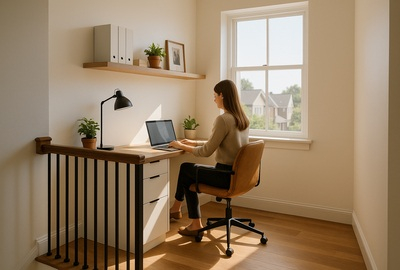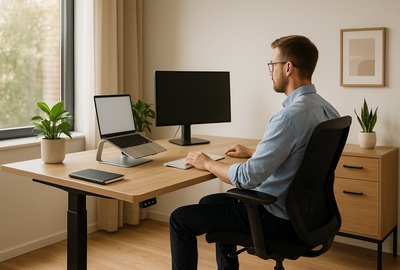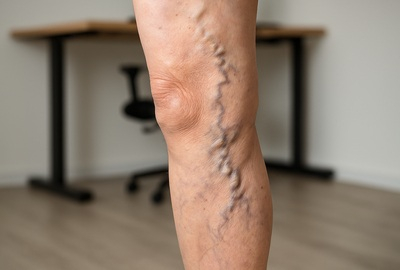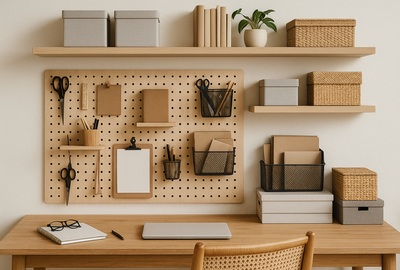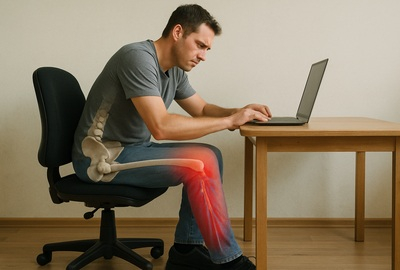- How Deep Should a Desk Be? Optimal Dimensions Guide
- 1. Understanding Desk Depth: What Is the Ideal Desk Depth for You?
- 2. Average Desk Depths by Use: Office Desk, Computer Desk, and Ergonomic Desk Setups
- 3. How to Measure Desk Space: Making It Work with Your Chair and Room Layout
- 4. The Role of Desk Depth in Ergonomics: Back Health, Posture, and Screen Distance
- 5. Choosing Desk Depth for Computer Work, Multiple Monitors, and Ergonomic Office Chairs
- 6. Popular Desk Depth Options: Pros and Cons Based on Your Workspace Needs
- 7. Custom Desk Depth vs Standard Sizes: What Works Best for Computer Desk Depth?
- 8. How Deep Should a Desk Be? Final Advice for Creating a Comfortable, Productive Setup
- Final Thoughts
How Deep Should a Desk Be? Optimal Dimensions Guide
Whether you’re revamping your home office or kitting out a full team of office workers, one question often slips through the cracks: how deep should a desk be? It's not just about squeezing furniture into a room—it’s about choosing the proper depth that supports your workflow, your posture, and your gear.
Pick a desk that’s too shallow, and you're left with tangled wires and no workspace functionality. Go for too much room, and it dominates your floor plan, wasting available space. What you really need is the perfect desk depth—a standard depth that fits your office work, allows you to work comfortably, and still leaves enough room to move, think, and breathe.
Finding the standard desk depth isn’t just a measurement game. It’s about striking the right balance between equipment, workspace functionality, and comfort. Whether you need more depth for multiple screens or a compact layout to suit a minimalist space, desk depth plays a role that fosters productivity and influences how well you get things done.
1. Understanding Desk Depth: What Is the Ideal Desk Depth for You?
Desk depth—measured from the front edge to the back—is the backbone of any efficient desk setup. It affects how much you can fit on your surface, your viewing distance, and your ability to work comfortably.
The ideal desk depth depends entirely on your tasks. For basic laptop work, 600mm might be enough. For dual monitors or more complex workflows, 700mm to 800mm is often the sweet spot. This range allows for sufficient space between you and your screen, while offering ample room for devices, documents, and movement.
For most tasks, you’ll need enough space to work without feeling cramped—but not so much that your reach becomes awkward. Finding the optimal depth means choosing based on your work style, not trends.
2. Average Desk Depths by Use: Office Desk, Computer Desk, and Ergonomic Desk Setups
Let’s look at some standard desk dimensions across common desk types:
- Office Desk: Usually ranges from 700mm to 800mm. Aims to strike a balance between writing, typing, and admin tasks—just enough to not feel cluttered.
- Computer Desk: Tends to be more compact, from 600mm to 750mm. Ideal if you're doing mainly computer work and using a single computer monitor.
- Ergonomic Desk: Often height-adjustable or paired with accessories like keyboard trays. These typically sit around 750mm to 800mm depth, which supports healthy posture and screen alignment.
Even compact desks can work if thoughtfully set up, but many office workers benefit from slightly deeper options that allow for an efficient and comfortable workspace.
3. How to Measure Desk Space: Making It Work with Your Chair and Room Layout
Before buying, map out your office space with actual measurements. You’re not just buying a desk—you’re redesigning a part of your work environment.
- Measure floor area: Leave at least 800mm behind the desk for chair clearance.
- Account for your office chair: Especially if you're using ergonomic office chairs, which often require more mobility and room.
- Think vertically: If you lack surface area, add shelving or monitor risers to utilise vertical space and avoid clutter.
- Consider office supplies and extra gear: Printers, lamps, a second computer monitor—they all require additional space.
This planning stage significantly impacts your ability to build an organized workspace that’s also functional and ergonomic. Avoid squeezing into a shallower depth if your workflow calls for something more expansive.
4. The Role of Desk Depth in Ergonomics: Back Health, Posture, and Screen Distance
When it comes to ergonomics, desk depth is a silent hero.
- Maintain proper posture: You want your elbows at 90 degrees, screen at eye level, and no hunching forward. That requires adequate space.
- Prevent strain: A deeper desk allows screens to be positioned far enough back to avoid neck strain.
- Rest comfortably: Your forearms should land gently on the surface, without dangling or stretching.
Whether seated or transitioning into standing positions, your desk should support a neutral spine and unrestricted reach. An ergonomic setup creates an environment that’s healthier, more focused, and less tiring across long work hours. This is especially true if you use a standing desk, where depth becomes even more important during postural shifts.
5. Choosing Desk Depth for Computer Work, Multiple Monitors, and Ergonomic Office Chairs
Every setup is different, but here’s a guide that hits most needs:
- Computer Work: 600mm is okay, but 700–750mm is better for workspace functionality.
- Multiple Monitors: Go deeper—750mm to 800mm at least—for ample space and proper viewing angles. It helps avoid stacking screens too closely, which can limit enough space for keyboard and arm movement.
- Ergonomic Office Chairs: Make sure there's enough room under and around the desk for leg movement and adjustment. Combine it with ergonomic office furniture for best results.
Choosing the right desk depth ensures that your space is functional, balanced, and tailored to your day-to-day activities. It also contributes directly to building an efficient workspace that encourages natural movement.
6. Popular Desk Depth Options: Pros and Cons Based on Your Workspace Needs
Let’s break down what’s common—and why:
- 600mm (Shallower Desk):
- ✅ Great for small spaces and minimal setups
- ❌ Can lead to feeling cramped with extra gear
- ⚠️ Use when you need to save room but still retain workspace functionality
- 700–750mm (Standard Desk Depth):
- ✅ Works for most tasks, from typing to sketching
- ✅ Leaves extra space for arms, devices, or simple paperwork
- ✅ Delivers an efficient and comfortable workspace with minimal compromise
- 800mm+ (Deeper Desk):
- ✅ Excellent for designers, developers, and those needing additional equipment
- ❌ Demands more space, but offers the optimal depth for productivity
Each range serves a purpose. Match your selection to your work style, daily tools, and room layout.
7. Custom Desk Depth vs Standard Sizes: What Works Best for Computer Desk Depth?
So, should you go custom?
- Standard desks: Built for accessibility. Quick, cost-effective, and perfect for most applications.
- Custom depths: Ideal if you have non-standard hardware, use multiple monitors, or need something to fit an awkward wall or corner.
Whether you're upgrading or starting fresh, consider how your space affects comfort and output. A well-designed desk setup should fit your equipment and provide a comfortable workspace from day one. This is how you build an optimal workspace—where every inch works in your favor.
8. How Deep Should a Desk Be? Final Advice for Creating a Comfortable, Productive Setup
To wrap it up:
- For office work and general use: 700mm–750mm provides a productive environment.
- For creative setups with lots of gear: 800mm+ gives the extra space you need.
- For minimal, mobile setups: a shallower desk of 600mm may suffice—but only if you're mindful of the trade-offs.
Desk depth is about more than numbers—it’s about experience. Choose based on what makes you faster, healthier, and more comfortable—not just what fits in the room.
Final Thoughts
Your desk isn’t just a slab of timber—it’s the foundation of your workflow. Whether you're working from home or outfitting a full office, the depth of your desk shapes how you sit, move, and stay focused.
Choosing the right size means fewer distractions, better posture, and a setup that evolves with your needs. When in doubt, choose function over fashion—and aim for a workspace that makes you feel ready to take on anything.
Need help? Deskup’s expert team can guide you through choosing a desk with the ideal depth for your needs. Browse our range of ergonomic models and compact desks online, or contact us for fitout solutions built to last.


 Buy Now, Pay Later
Buy Now, Pay Later Verified Rating
Verified Rating 

